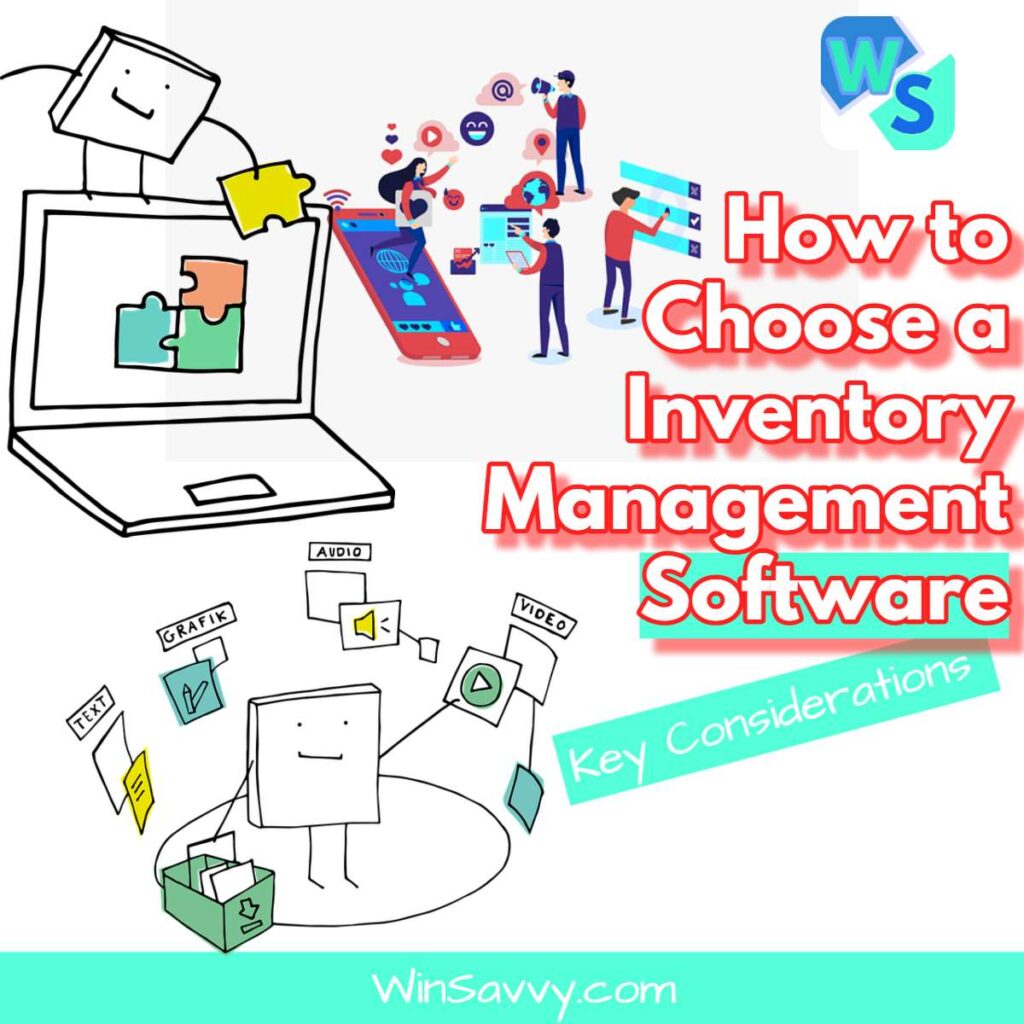Understanding Inbound Marketing
Definition of Inbound Marketing
Inbound marketing is like being that friendly neighbor who invites you over for a cup of sugar n’ tea, rather than forcing sales pitches at the door. It’s a strategy that reels in potential customers by sharing valuable content and forming bonds. This is the complete opposite of the high-pressure sales tactics you’d find in outbound marketing. Think of inbound as me putting together great content that clicks with the passions and needs of my audience. This approach doesn’t just grab attention, it builds trust and turns folks into devoted customers (310 Creative).
Benefits of Inbound Marketing
Inbound marketing is a game-changer with perks that are like hitting the jackpot for a biz. By syncing up marketing efforts with what customers truly want, this method spreads the word about a brand, fosters serious connections, and continuously brings in potential clients. Let’s break it down:
| Benefit | Description |
|---|---|
| Attracts Loyal Customers | It crafts experiences that speak directly to the folks I’m aiming to engage. |
| Builds Trust | Offering valuable content builds my street cred and nurtures a sense of trust between my brand and the people it serves. |
| Non-Invasive | Unlike those pesky outbound tactics, inbound is all about respecting the consumer’s precious time and attention, improving how they see the brand. |
| Quantifiable Results | I can geek out on the numbers with analytics to fine-tune how things are done for better success. |
| Tailor-Made for Every Step | Whether someone’s just curious or ready to seal the deal, inbound has the right stuff for every stage of their buying journey (HubSpot). |
Using inbound marketing means I can attract, engage, and truly wow potential customers with content that plants the seeds for long-term growth. Building relationships really pays off, ensuring customers leave happy after a purchase and keep coming back for more, creating a win-win for everyone involved (Adobe). Want to see it in action? Check out our inbound marketing examples and inbound marketing strategies.
Inbound vs. Outbound Marketing
Contrasting Approaches
Alright, let’s break this down. When you look at inbound and outbound marketing, you’re really seeing two different ways of getting folks interested in what you’ve got to offer. Inbound is all about being the cool kid on the block—dropping knowledge bombs, sharing wicked content, and basically luring people in with stuff they actually care about. You’re giving them the goodies they didn’t even know they needed until you popped up with the perfect solution.
Outbound, though? It’s like that guy with the megaphone. Throwing ads in front of people right when they’re sitting down to dinner, pushing those messages to get any Tom, Dick, or Harry to pay attention. We’re talking commercials, billboards, those trade shows where you’re just handing out flyers like there’s no tomorrow.
| Aspect | Inbound Marketing | Outbound Marketing |
|---|---|---|
| Focus | Attract and vibe with content | Getting in your face with ads |
| Cost Efficiency | Better bang for your buck | Making it rain, but not always worth it |
| Targeting | Tailor content to who actually cares | Shotgun approach to everyone |
| Timeframe | Play the long game for bonds | Quick wins but short-lived |
Targeting Strategies
So how do they aim their arrows? With inbound, you’re basically speaking their language, addressing their hopes, dreams, and challenges. That’s pure gold when it comes to wooing high-quality leads. They’ve already got one foot in the door by the time they find you. If you know what makes them tick, you’re halfway there. It’s like setting the table for a dinner party exactly to your guest’s liking.
Outbound’s a little different. It’s trying to hit as many eyeballs as possible, rolling the dice that something sticks. Your message might reach a ton of people, but it isn’t always the right audience, leading to a boatload of wasted effort when nobody vibes with what you’re laying down.
And then there’s the cost. Outbound can be like throwing money out the window, whereas inbound takes its sweet time—building trust and sprouting relationships like a garden you water regularly. Sure, outbound might get some quick and dirty results, but those connections drift away faster than a summer breeze.
For those wanting to dig deeper into inbound stuff, why not mosey over to our other articles exploring inbound marketing strategies or peep some inbound marketing examples?
Effectiveness of Inbound Marketing
ROI Metrics Comparison
Understanding how effective inbound marketing is compared to outbound marketing can make a big difference for your business. If we look at the numbers, inbound usually comes out on top when you’re thinking about return on investment (ROI). Why? Because, simply put, it’s cheaper to get a lead through inbound methods, as it connects with folks by providing content they actually care about. This means they’re more likely to stick around and eventually become customers.
Inbound is like fishing with the perfect bait, drawing in the right crowd. On the flip side, old-school advertising, like commercials or billboards, casts a wide net, aiming to reach as many eyes as possible. While this might get you seen quicker, it doesn’t translate easily into people actually coming through and buying. Here’s a quick look:
| Marketing Type | ROI Measurement | Cost per Lead | Targeting Precision |
|---|---|---|---|
| Inbound Marketing | Higher ROI, precise tracking via digital tools | Lower costs | High, based on content relevance |
| Outbound Marketing | Quantifiable but often lower ROI | Higher costs | Low, broad audience reach |
Interested in more numbers? Check out our inbound marketing statistics.
Lead Generation Efficiency
When it comes to rounding up leads, inbound wears the crown. By creating meaningful content that speaks directly to your potential customers, inbound marketing draws in folks who are genuinely interested. When people see something that connects with what they want or need, they’re more likely to engage and eventually convert to a sale.
Outbound techniques, on the other hand, try to hit everyone in the crowd. While you cover more ground, it’s like throwing spaghetti at the wall to see what sticks—not everyone’s going to bite, and you might end up with a lot of wasted pasta. This can mean pouring time and money into efforts that don’t pan out as well. Here’s how inbound and outbound shake down:
| Marketing Approach | Lead Generation Quality | Engagement Rate | Conversion Rate |
|---|---|---|---|
| Inbound Marketing | High-quality leads | Higher | Higher |
| Outbound Marketing | Mixed quality | Lower | Lower |
For the best of both worlds, try a hybrid strategy. Mixing personalized content with wider-reaching outbound tactics can hit that sweet spot where you’re getting the most bang for your buck. Dive deeper into how this works with our inbound marketing strategies.
By keeping an eye on ROI and how well you’re pulling in leads, you can make smarter choices that help your marketing hit the bullseye. Whether you’re running a small business or working in a big company, the right mix of strategies can boost your campaigns like nothing else.
Integrated Marketing Strategies
Merging techniques from inward-facing and outward-reaching marketing isn’t just mixing apples and oranges; it’s about grabbing the best of both world’s and ironing out their quirks to boost my marketing mojo.
Leveraging Strengths
Look, the magic of inward-focused marketing is in how it speaks to folks on a personal level. You know, like when a coffee shop remembers your favorite drink. Meanwhile, blasting out marketing opens the floodgates for getting noticed—like shouting your brand from a rooftop. Using both, I can kick off the buzz with an outward bang while luring in the interest with thoughtful, engaging content.
| Marketing Strategy | Strengths |
|---|---|
| Inbound Marketing | Customized content, builds bonds, nurtures leads |
| Outbound Marketing | Instant recognition, wide audience catch, boosts brand buzz |
By mashing together inward marketing tools like inbound marketing software with outward tactics found under outbound marketing techniques, I can piece together seamless campaigns that ring the engagement bell at different stops on the consumer train.
Addressing Weaknesses
Of course, nothing’s perfect. Inbound’s a slow grower since it’s the long game, weaving trust over time. Blasting outward, though, might fall flat sometimes ’cause, let’s face it, nobody loves ads popping up outta the blue.
To tackle these, I can spice up outward efforts with pointed content–making sure what I’m saying clicks with who I’m saying it to. Plus, keeping my inbound marketing content fresh and data-savvy through inbound marketing analytics means I can tweak my methods based on what the numbers are whispering in my ear.
In sum, mixing inbound with outbound turns a meh routine into a lively strategy that checks more boxes and grabs a bigger piece of the audience pie. Want more juicy deets? Take a gander at our inbound marketing statistics, or peek at inbound marketing best practices.
Transitioning to Inbound Marketing
Switching gears to focus on inbound marketing puts us on a path that’s all about giving folks what they actually want. It invites us to shift our gaze away from the scattergun approach of traditional marketing—shouting our messages to anyone within earshot—and leans into attracting and engaging with the right folks. We’re talking about genuinely interested potential customers. According to our pals over at 310 Creative, this is what makes the magic happen in today’s ever-online world.
Shifting Marketing Focus
First things first, we jump into the inbound mindset. You might ask, “What’s that about?” It’s all about the “Attract, Engage, Delight” approach. My team will roll up their sleeves and dive into crafting a killer content plan—think blogs, fun social media stuff, and sharpening our skills in SEO to make sure we actually get seen in the jungle that’s the internet. This isn’t just about swapping out tactics, it’s about a whole new way of thinking. Fun fact: over 60% of sales pros now roll with inbound strategies, and it’s really paying off (310 Creative).
| Key Focus Areas | What We Do |
|---|---|
| Attract | Pull in folks looking for what we offer. |
| Engage | Chat and build those bridges. |
| Delight | Give them a reason to stick around after they buy. |
Adopting the Inbound Methodology
Now, if I’m serious about doing this right, I’ve got to guide potential customers through their buying journey with messages they actually care about. That’s how you turn inquiries into long-term relationships. Tools like marketing automation software play a big role in keeping the wheels turning smoothly. As HubSpot Blog points out, nifty tricks like email marketing, chatbots, and automated workflows can help us cozy up to our leads in a meaningful way.
When we chat about metrics and the almighty ROI, inbound generally shows off some snazzy numbers compared to the old outbound ways (310 Creative). Investing time and resources in content and strategies that last pays off, proving that the inbound route is more than worth the ride.
Making this shift isn’t just about flipping the script; it’s about changing my entire approach to match the vibe of today’s buyers. Aligning my strategies with what’s current and what folks crave not only amps up the effectiveness of my efforts but makes for a smoother-running machine. For some extra nuggets on inbound marketing strategies, digging into more resources could be just what we need to nail this transition.
Essential Components of Inbound Marketing
When I’m diving into the world of inbound marketing, there’s a handful of key ingredients I keep at the forefront: crafting killer content, mastering SEO, and keeping a lively social media presence. These are the bread and butter of snagging the attention and interest of my ideal audience.
Content Creation
Creating top-notch content is like hitting the jackpot in inbound marketing. It’s all about pulling people in, keeping ‘em hooked, showing off some brand finesse, and earning their trust. The lineup includes lively blog posts, snappy videos, and eye-catching infographics. Each piece is a magnet for clicks and shares, enticing visitors to keep popping over for more.
| Content Type | Purpose |
|---|---|
| Blog Posts | Drive traffic and turn curious into loyal |
| Videos | Connect with the crowd and make info stick |
| Infographics | Break down the tricky stuff, easy-peasy |
| E-books | Dish out detailed know-how and reel in leads |
Looking for tips on crafting standout content? Check out inbound marketing content.
SEO Strategies
Now, if there’s any tool that keeps my inbound marketing rolling, it’s Search Engine Optimization, or SEO. Armed with tactics like finding the right words, and tweaking under-the-hood stuff on my site, I make sure my content gets noticed by the search engine overlords. This boosts my site’s rank on search results, making it a hotspot for organic traffic (310 Creative).
Here’s the SEO playbook:
- Keyword Research: Scoping out the right words and phrases to sprinkle throughout my content.
- On-Page SEO: Fine-tuning everything website-side to look good to visitors and the algorithm.
- Off-Page SEO: Getting others to talk about or link to my site. It’s like digital networking.
Nail SEO, and I’m rolling in quality leads, ramping up my marketing mojo. For tips and tricks on SEO in the context of inbound marketing, peek at inbound marketing for SEO.
Social Media Marketing
Social media is like my megaphone for amplifying content and cultivating customer engagement. Keeping things fresh and consistent ensures my brand sticks in folks’ minds. Sharing posts, videos, and infographics that scream ME gets people chatting.
An effective social media strategy involves:
- Consistent Messaging: Making sure all posts scream brand.
- Engagement: Being chatty – responding fast to comments and DMs to foster good vibes.
- Regular Updates: Keeping the info coming so folks hang around.
Solid social media marketing really revs up the impact of inbound strategies (310 Creative).
With killer content, fine-tuned SEO, and a savvy social media game, I’m all set to expand my reach and build valuable connections. Want to dig deeper into inbound secrets? Check out our section on inbound marketing strategies.
Nurturing Leads with Inbound Marketing
Email Marketing Techniques
From my own experience, email marketing is the secret sauce for turning lukewarm leads into loyal customers. It’s like having a one-on-one chat with folks, just a tad more digital. Crafting emails that hit home is how I cozy up to potential buyers. Here’s how I jazz it up:
- Segmentation: I break down my contacts into groups based on stuff like age, habits, or what they like. This way, each message feels like it’s speaking directly to them.
- Personalization: More than just sticking their name on top, I’m talking about tweaking the message based on what they’ve bought before or what grabs their attention. Done right, it shoots up the chance they’ll open my email and take action.
- Automation: Setting up email sequences that trigger based on what users do helps keep the convo going without much sweat. Sending the right message when they’re engaged is the key.
Check out more tips in our piece on inbound marketing tactics.
Personalization at Scale
Making each customer feel special, even while talking to the crowd, that’s the challenge. By tapping into the treasure trove of data, I craft experiences that are as personal as a handwritten note but reach many times over. Here’s my playbook:
| Method | Description |
|---|---|
| Dynamic Content | I mix up what’s shown in emails depending on who’s getting them, using details like interests and past actions. |
| Behavioral Targeting | Keeping an eye on what users do lets me tweak my offers and messages so they’re just right for them. |
| Data-Driven Insights | Looking back at past campaigns gives me clues to tailor future ones to hit the mark even better. |
These nifty moves help me steer leads from the murky waters between inbound vs. outbound marketing.
Cracking the email code with a personal twist lets me build strong ties with future customers, boosting their interest, trust, and overall happiness. Dive deeper into our guide on inbound marketing best practices.
Building Relationships through Inbound Marketing
Building bridges rather than barriers with potential customers is the cornerstone of inbound marketing. It’s all about connecting with folks, not just selling to them, through a clever mix of attracting, engaging, and keeping them happy as they meander through their buying journey.
Attract, Engage, Delight Model
Ever heard of the Attract, Engage, Delight thing? It’s a simple yet effective way to guide potential customers as they decide what’s what. Here’s a bit about each step:
Attract: First up, pull those curious cats in with content that’s not just clickbait. We’re talking real, valuable stuff that resonates with what they care about. Think blogging, a dash of social media chit-chat, and topping it all off with some search engine mojo. Need more ideas? Check out our inbound marketing examples.
Engage: Got their attention? Sweet! Now, keep the convo going. Throw in some personalized emails and interactive goodies that make them feel special. It’s like speaking their language, really. Tools are out there to help, especially in inbound marketing automation, so don’t shy away from using them.
Delight: Last, but not least—make ’em smile! Even after they’ve handed over the cash, keep things lively with content that feels like a gift that keeps on giving. Ask for feedback and stay in touch to build connections that last. Happy customers are walking billboard, after all!
Organic Lead Generation Processes
Getting leads without breaking the bank on ads? Yes, please! Organic lead generation is at the heart of this inbound magic. Here are the crucial bits:
| Lead Generation Process | Description |
|---|---|
| Content Marketing | Whipping up content that’s meaty and meets your audience where they are. Informative, engaging stuff that solves problems or answers questions. Dive deeper into inbound marketing content. |
| Social Media Engagement | Spread the good word on social media, connect with peeps, and nurture a community vibe. It’s about consistent back-and-forth chatter that builds a rapport. |
| SEO Optimization | Give your content that visibility boost in the search race. Smart SEO makes sure your stuff lands on the right screens via organic search. Curious about SEO? Our inbound marketing for SEO has got the deets. |
| Email Marketing | Keep in touch with tailored emails. Whether nurturing leads or keeping the past buddies updated, do it with flair. Personalized email campaigns work wonders, and in our email marketing techniques section, we share how. |
By working these organic processes, businesses can create a lasting and wallet-friendly way to keep their audience growing. This approach not only builds trust but enhances loyalty, which is often a step above the older, shout-happy outbound methods. Fancy more ideas or some data? Our inbound marketing tactics and inbound marketing statistics pages have your back.





















